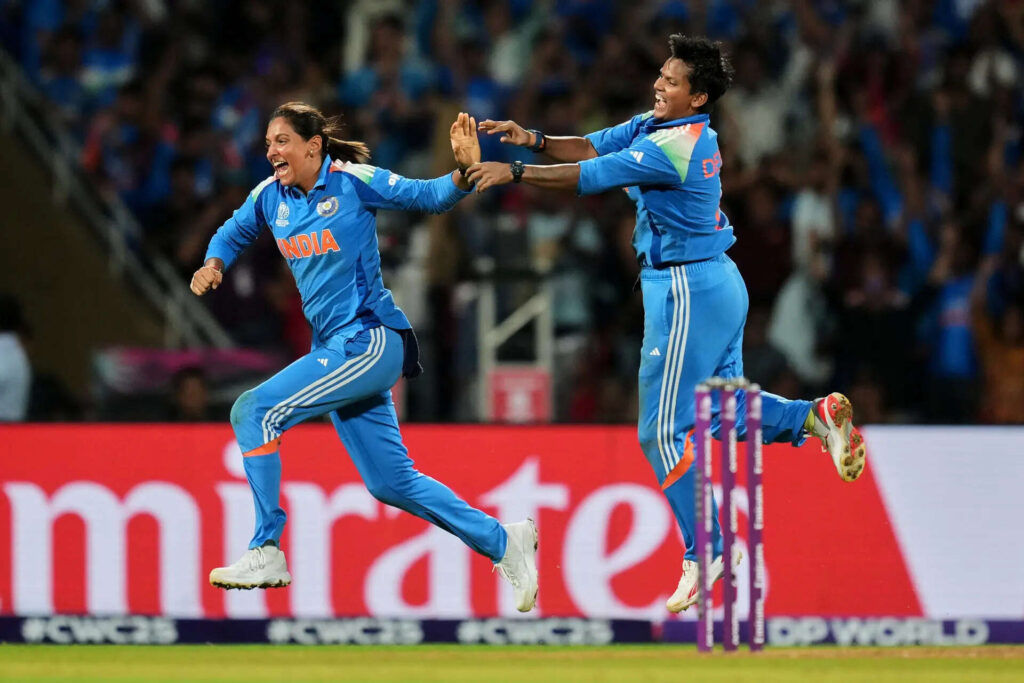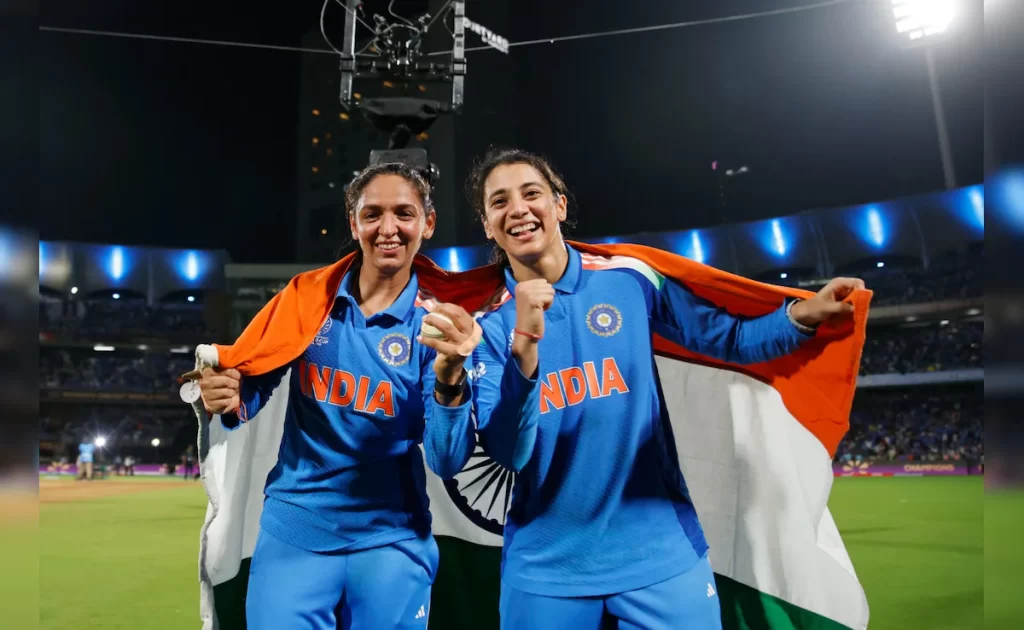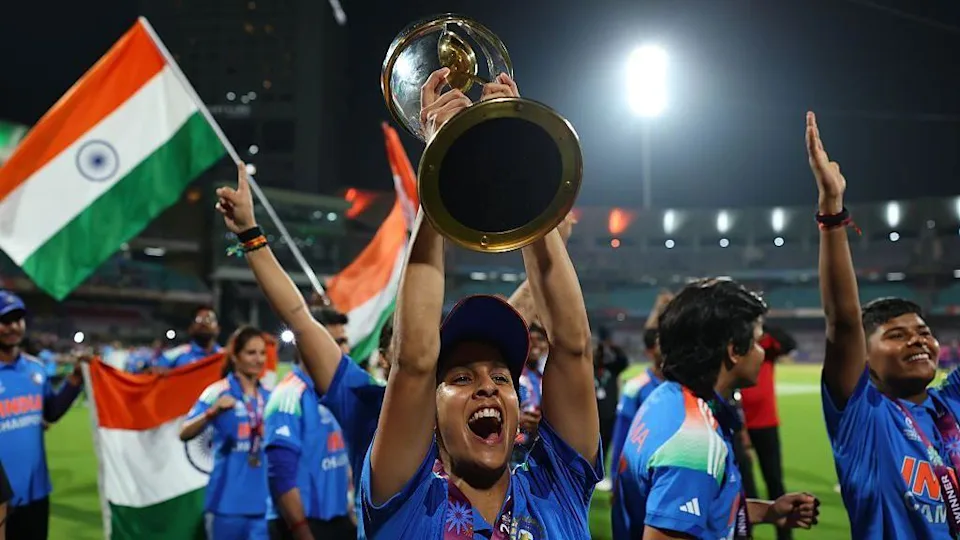India Women’s World Cup Victory: Horns blared. Coffee shops buzzed. The night sky shimmered with excitement. Millions of Indians watched Harmanpreet Kaur lift the World Cup trophy at DY Patil Stadium. For them, it felt like a dream come true.
Rain almost spoiled the final. However, the Indian women fought through the storm and beat South Africa under the bright lights. The win brought their first World Cup title after years of heartbreak.
When Deepti Sharma took the last wicket, the crowd exploded with joy. Even after midnight, fans waved flags and sang with pride. It was not just a match. It was a new chapter in Indian cricket.

A Triumph Beyond the Trophy
This win carried a message of hope and courage. For many years, women in India have faced limits in school, work, and sport. Still, this victory gave them belief that things can change.
Shafali Verma, for example, once dressed like a boy to join a cricket academy. Her story shows that talent has no gender. When girls get a fair chance, they can shine just as bright.
In addition, the Women’s Premier League (WPL), which began in 2023, helped build that platform. After the World Cup win, the spotlight grew even stronger. Now, families, sponsors, and fans proudly support women’s cricket.
A Journey Full of Hurdles: India Women’s World Cup Victory
The tournament began quietly. Few posters appeared. Many people didn’t even know it had started. At airports, staff looked puzzled when travelers said they came for the Women’s World Cup.
Meanwhile, matches in Indore, Visakhapatnam, and Guwahati filled up only when India played. The other games had small crowds.
BBC commentator Prakash Wakankar said, “At one point, people in Mumbai didn’t even know when India was playing their first match.” His words showed that women’s cricket still needs stronger promotion.
Rain, Venues, and Missed Chances
India co-hosted the event with Sri Lanka, while Pakistan’s matches took place in Colombo. Sadly, the schedule clashed with the monsoon season. Five of the eleven games washed out, which affected teams like Pakistan, Sri Lanka, and New Zealand.
Because the afternoon rain was predictable, fans asked why the International Cricket Council (ICC) didn’t start games earlier. However, no answer came.
Some stadiums were also far from cities, making travel hard. Yet the DY Patil Stadium overflowed during the final. This proved that India’s love for cricket only needs the right spark.
The Semi-Final That Changed Everything: India Women’s World Cup Victory
The real thrill came in the semi-finals. South Africa shocked England when Laura Wolvaardt scored 169 runs and Marizanne Kapp took five wickets. At the same time, in Navi Mumbai, Jemimah Rodrigues scored a stunning century as India chased 339 runs against defending champions Australia.
That match changed everything. Fans queued outside the stadium a day before the final. Streets filled with sellers offering flags, hats, and shirts with Smriti Mandhana and Harmanpreet Kaur printed on them. As a result, the World Cup fever finally spread everywhere.
The Grand Finale and a Nation United: India Women’s World Cup Victory
When Sachin Tendulkar walked onto the field with the trophy, the crowd went wild. It felt like 2011 again. Tickets sold out early, and even some players’ families struggled to get in.
Once the game began, India played with heart and confidence. Finally, when the last wicket fell, fireworks lit up the sky. The team celebrated in shirts that read “Champions.”
Soon after, legends Mithali Raj and Jhulan Goswami joined the celebrations. In addition, the BCCI announced a victory parade in Mumbai, allowing even more fans to join the party.

A New Beginning for Women’s Cricket
After the match, Harmanpreet Kaur said:
“This is not the end; this is just the beginning.”
Her words summed it up perfectly. Parents now push their daughters to play. Sponsors step forward to help. And young girls dream of wearing the Indian jersey.
The tournament had a few flaws—rain delays, quiet crowds, and travel issues—but the ending was perfect. India has embraced the fever, and it’s only getting stronger.
Conclusion: India Women’s World Cup Victory
India’s World Cup victory became a symbol of change. It united fans, inspired kids, and showed that passion can move mountains.
Although challenges still exist, this win started something big. The spirit of women’s cricket in India burns bright—and it will never fade.
